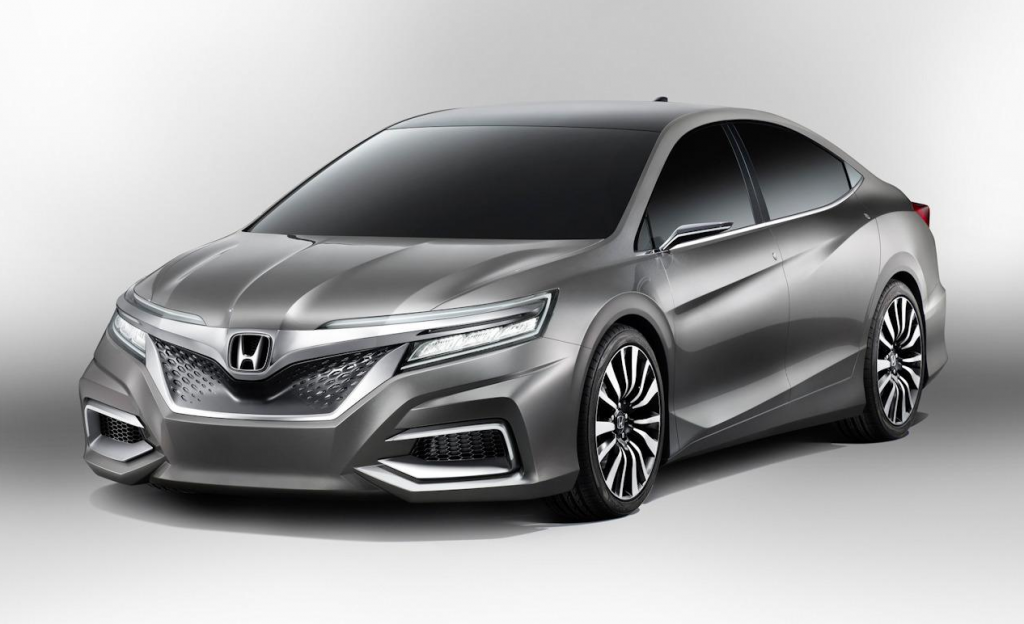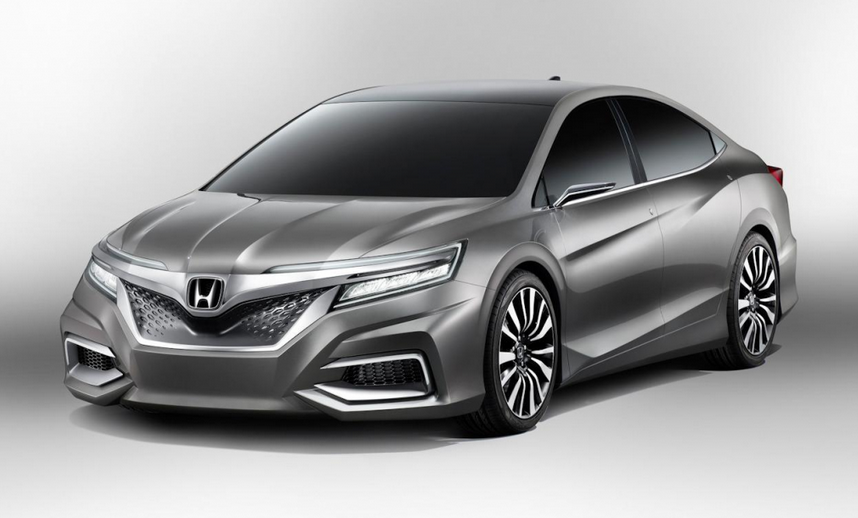
By Jim Gorzelany
Honda’s top-selling vehicle, the Honda Accord, should receive a complete redesign for the 2018 model year, but we don’t anticipate the automaker will veer far from what’s been a successful direction for this midsize sedan and coupe combo. We expect the next-generation Accord will continue to offer a winning combination of commuter-friendly performance, a comfortable and spacious interior, good fuel economy and sufficient–though perhaps not class-leading–features, all at competitive pricing. A fuel-saving Accord Hybrid, and an even more frugal plug-in Accord Hybrid sedan will likely continue in the lineup. The question is whether Honda will be satisfied playing the perennial number two to the top-selling car in the U.S., the Toyota Camry, or will it pull out all the proverbial stops to gain segment supremacy?
What It Is
The 2018 Honda Accord will represent the 10th generation of this popular midsize car line that dates back to 1976. Like a middle-aged child star, the current Accord bears little resemblance to its original iteration, back when it was a smallish compact hatchback, styled to resemble the larger U.S. cars of the period. A sedan followed in 1979, and the Accord would grow considerably in length and power over time. A coupe was added to the line in 1988, and a station wagon version subsequently came and went, though a modern-day version of it remains as the quasi-crossover Honda Crosstour.
Sold as either a midsize sedan or a slightly sportier coupe, the Accord was last redesigned for the 2013 model year in a moderately more-svelte version of its predecessor, receiving freshened styling, revised powertrains and adding a Plug-In Hybrid version; a more-conventional Hybrid version followed later in the 2013 calendar year.
Flashback Review! 1982 Honda Accord
Honda is, by nature, a company that’s notoriously tight-lipped regarding future model information, so we can only postulate when the next-generation Accord will arrive, what changes will be made to the line, and what it might cost. Based on past model cycles we’d expect the next-generation Accord to debut sometime during the 2017 calendar year as a 2018 model. Both sedan and coupe models will probably remain in the line, along with the aforementioned Hybrid and Plug-In Hybrid models. In the meantime the Accord could receive a mild refresh for 2016 to help maintain its market presence, which would likely include little more than modest styling tweaks, new wheel designs, and perhaps some added features.
Where it Fits
The Honda Accord competes both in size and price with other mainstream midsize cars like the Chevrolet Malibu, Ford Fusion, Mazda 6, Nissan Altima and Volkswagen Passat, with the Toyota Camry being its closest rival. Only the Altima, however, offers a two-door model that competes directly with the Accord Coupe. A more luxurious, expressively styled, and slightly sportier version of the Accord Sedan is sold through Honda’s Acura division as the TL/TLX.
Note that the North American Honda Accord is significantly different that the same-named versions of the car that are sold in Europe and Japan, and that’s a practice we don’t expect to change for its anticipated model-year 2018 revision. While Toyota and Volkswagen likewise sell “Americanized” versions of the Camry and Passat in the U.S., other automakers, including Ford, General Motors, Audi, BMW, and Mercedes-Benz, instead sell only modestly altered versions of their cars across the world, sharing platforms, engines, and other components in order to minimize their development and production budgets. In fact, according to a speech given in late 2012 by Honda’s President & CEO, Takanobu Ito, the company is overhauling its current product development strategy to give even greater autonomy to regional/local Honda affiliates. Instead of a top-down Japanese-centric approach, the new method will adopt a more-regional strategy.
The North American version of the 2018 Honda Accord will likely continue to be built in the U.S. Honda has been producing Accords at its Marysville, Ohio assembly plant since 1982.
